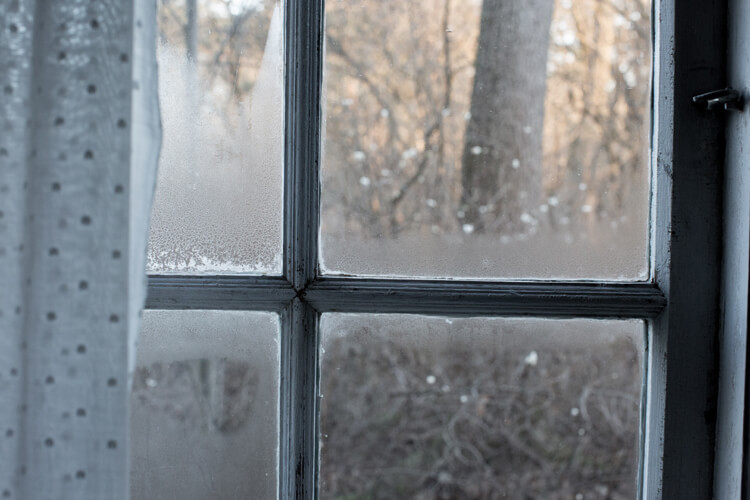Like frizzy, untamed hair, mold thrives in humid conditions. The link between moisture levels and mold is a strong one – and one we should pay attention to if we want to maintain a mold-free home. As weather patterns and seasons come and go, it is important to keep track of the humidity levels within our home walls in order to preserve a healthy dwelling.
According to the EPA, the humidity in the home can supply enough moisture to grow mold if it is 60 percent or above, with the ideal level to prevent mold being between 30 and 50 percent. By knowing the humidity level of our residence we can better assess our mold risk. A simple meter to gauge the indoor water vapor in the air can help evaluate if mold might get cozy in your home.
Signs of Humidity
High humidity levels in the home often have warning signs, like when we get frizzy hair on a hot, muggy day. However, you may want something more reliable than the observable behavior of one’s hairstyle.
Condensation
Condensation occurs when humid air comes into contact with a cold surface, such as a window, and forms droplets of water. In short, it is the process of water going from the gas phase to liquid phase. If you discover condensation in your home, it is likely from too much humidity. This is usually observable in windows and window sills, and is a good place to check first.
Moisture Problems
Moisture can build up within a home or building due to lack of adequate ventilation. Other issues can cause too much moisture and mold growth as well, such as a leaking roof, plumbing leaks, and unvented appliances.
If you smell mold, it is a good indicator that you have a moisture or humidity issue that has caused the mold growth. Mold can cause a number of health problems that can also indicate that you have a moisture dilemma, especially if your health gets better when out of the house or the environment with the mold.
How to Reduce Humidity
Ventilation
Ventilation is key to a healthy home, it allows air flow to adequately keep the house dry by stopping condensation, and bringing in fresh air/keeping the air regulated (studies show indoor air can be more polluted than outdoor air). Good ventilation can even reduce concentrations of radon gas, as well as VOCs. Ventilation is key in mold prevention!
Dehumidifiers
If your home has humidity levels above the recommended 30-50 percent, you may want to purchase a dehumidifier for your home. Dehumidifiers will help regulate the moisture levels in your home, which reduces the humidity and condensation and will help prevent mold. There are a variety of dehumidifiers available depending on the system you’d like and the size of the area you’d like to reduce humidity levels in.
Fix Leaks
While leaks are not necessarily a humidity issue, it is another key in controlling moisture and water damage to prevent mold. Check your pumping for leaks often, such as under the sinks in bathrooms and kitchen, roof leaks, washing machine, etc.
Mold Prevention
High humidity can be a major problem for mold prevention, but with some of these simple remedies for humidity in your home, you can be assured that you are reducing your risk of mold in your house!


3 comments
Thanks for sharing. Cooking, bathing, drying clothes, washing dishes and other everyday activities add moisture to the air. Some heating appliances, including unvented natural gas or kerosene models, also increase the moisture inside your home.
Regards,
Raul
Thanks, I was researching how humidity can cause mold to grow inside of roof. This makes perfect sense.
Sincerely,
Victor R.
Truly informative. The daily activities of a family of 4 produces 3 gallons of moisture into the atmosphere per day. With all these things in mind it’s easy to imagine how easily the home’s envelope may be susceptible to abnormal mold growth.